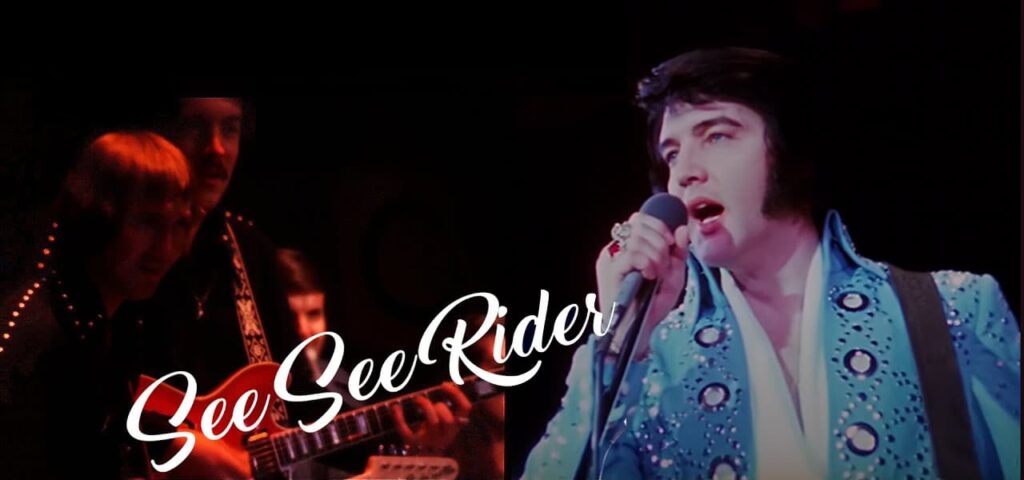
See See Rider: The Lasting Echo of a Blues-Rock Standard
Elvis Presley’s “See See Rider” is more than just a song; it’s a living testament to the symbiotic relationship between rock and blues, a high-octane rendition that captured the spirit of a legendary comeback. Released in 1970, this track was a staple of Presley’s dynamic live performances, particularly during his triumphant return to the concert stage in Las Vegas. While it may not have been a traditional singles chart smash, its significance lies in its live performance history and the way it cemented Presley’s identity as a powerhouse performer in a new decade. It was the lead track on his album, ‘On Stage: February 1970,’ which itself was a commercial success, peaking at number 13 on the ‘Billboard 200’ chart. The raw energy and infectious swagger of the song, as captured on that live recording, showed the world that the King was back and better than ever.
The story behind “See See Rider” is a winding one, a journey through the annals of American music. Its origins can be traced back to the 1920s, with various artists claiming a version of the song. However, the most definitive early recording is by Ma Rainey, the “Mother of the Blues,” who first recorded it in 1924 as “C. C. Rider Blues.” The song’s title is a phonetic spelling of “easy rider,” a term used in blues slang to refer to a person’s lover or a man who is a charming wanderer, often supported by a woman. The song’s enduring appeal lies in this very concept—a tale of love and loss, of a lover who has left, but whose memory lingers, a phantom limb of the heart.
Presley’s interpretation, however, shifts the mood from the melancholic blues of its predecessors to a celebratory, rock ‘n’ roll spectacle. His version, arranged by the great James Burton, with its electrifying brass section and driving rhythm, transforms the lament of the blues into an anthem of defiance and hope. The song’s meaning, in this context, becomes less about the sadness of being left behind and more about the thrilling pursuit of a wild and free spirit. When Elvis sings, “I’m going to get my pistol / And a shotgun, too / I’m gonna shoot my woman / Just to keep her from being blue,” he’s not speaking of literal violence. It’s a hyperbole, a dramatic flourish common in the blues tradition, meant to convey the depth of his desperation and the pain of an unrequited love, a theatrical representation of emotional turmoil.
For those of us who remember those days, the sound of that opening horn blast is like a time machine. It takes us back to a Vegas showroom, a moment in history where Elvis proved that his talent was timeless. It’s the sound of a man who, after a long hiatus, was ready to reclaim his throne. The song’s vibrant, almost chaotic energy mirrors the exuberance of his audience, a shared catharsis between performer and crowd. It’s a reminder that great music transcends its era, its genre, and its initial meaning, adapting to new voices and new generations. “See See Rider” in the hands of Elvis Presley wasn’t just a cover; it was a revival, a spiritual reinterpretation that brought a classic blues tune to a new, broader audience. It’s a beautiful, raw, and powerful reminder of Elvis Presley’s legacy as a true king of music.